H. T. Webster was probably the best-known cartoonist in mid-20th century America.
Who, many of you are asking?
H. T. Webster.
His picture made the cover of Time magazine in 1945:
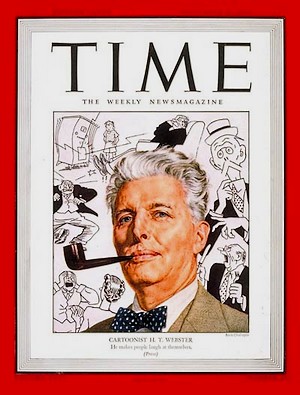
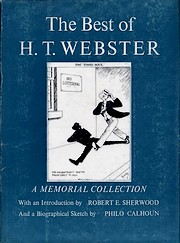 Webster published over 15,000 panels over the course of 40-plus years as a newspaper cartoonist. A memorial collection of his cartoons, The Best of H. T. Webster, published in 1953, a year after his death, featured an introduction by the Pulitzer Prize-winning author, Robert E. Sherwood, and made the best seller lists. In his introduction, Sherwood wrote,
Webster published over 15,000 panels over the course of 40-plus years as a newspaper cartoonist. A memorial collection of his cartoons, The Best of H. T. Webster, published in 1953, a year after his death, featured an introduction by the Pulitzer Prize-winning author, Robert E. Sherwood, and made the best seller lists. In his introduction, Sherwood wrote,
On April 4, 1953, the last new drawing by H. T. Webster was published in the New York Herald Tribune and a hundred and twenty-five other papers, and for many of us timid souls, this day marked as one of life’s darkest moments. There will be other fine artist-cartoonist-critics to inspire use with joy or indignation from day to day, but never another to span the years and the range of human emotions in the same extraordinary way that Webby did.
Webster based many of his one-panel cartoons on a number of recurring themes, and Sherwood managed to work two of them into his statement above.
“Life’s Darkest Moments” were, like many of his pieces, wonderfully succinct takes on the ways in which life consistently pokes a pin into the bubbles of our fantasies of self-importance.
Life’s Darkest Moments
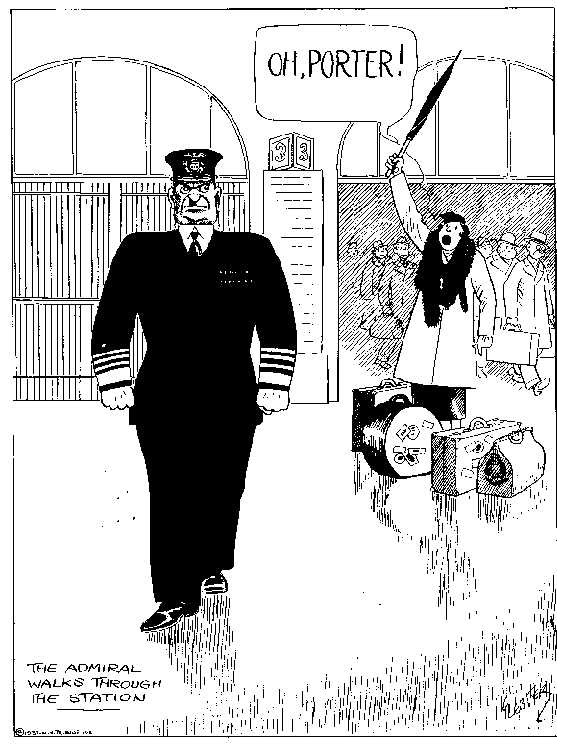
I had this happen to me the first time I flew home in my shining second lieutenant bars. While waiting at the baggage carousel, a woman walked up to me and asked if I was the driver and where my bus was parked.
But Webster also had a gentle sympathy for the big role that little things often play in establishing our sense of self, as illustrated in his cartoons titled, “The Thrill That Comes Once in a Lifetime.”
The Thrill That Comes Once in a Lifetime
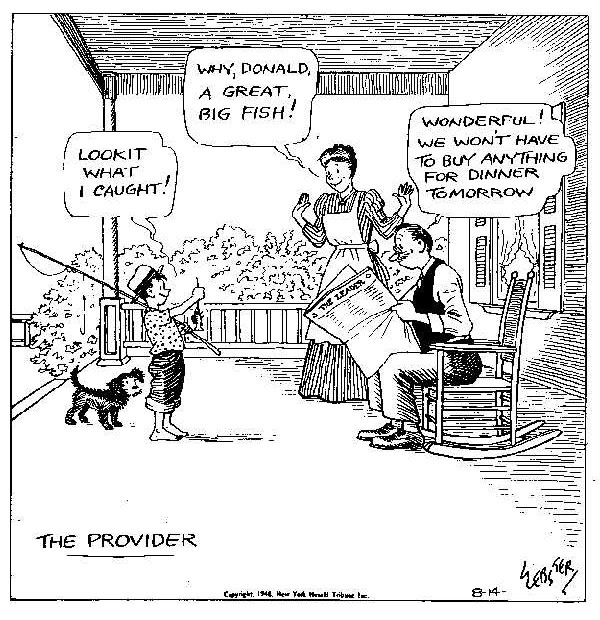
Another of Webster’s series was titled, alternately, “How to Torture Your Husband” and “How to Torture Your Wife.” These illustrated the remarkable capacity husbands and wives have for obliterating each other’s self-esteem with the most well-intentioned remarks:
How to Torture Your Wife

Some of his features, particularly those dealing with bridge, may not have aged as well as others. Many of these collected in The Best of H. T. Webster depend on more of a familiarity with terminology of the game than most people have today. Yet even some of the bridge cartoons work with no explanation at all:

But by far the best-known of all Webster’s series was “The Timid Soul,” which introduced a character whose name has outlived that of his creator: Caspar Milquetoast. “Millions of Americans,” wrote the uncredited author of Time’s cover story, “know Caspar Milquetoast as well as they know Tom Sawyer and Andrew Jackson, better than they know George F. Babbitt, and any amount better than they know such world figures as Mr. Micawber and Don Quixote. They know him, in fact, almost as well as they know their own weaknesses.”
As Michael Quinion writes on his World Wide Words site, “The name is just a Frenchified respelling of the old American English term milk toast, an uninspiring, bland dish which was created from slices of buttered toast laid in a dish of milk, usually considered to be food for invalids.” Like the dish, Milquetoast is uninspired, bland, and utterly lacking the ability to stand up for himself. He takes all forms of authority at face value:
The Timid Soul
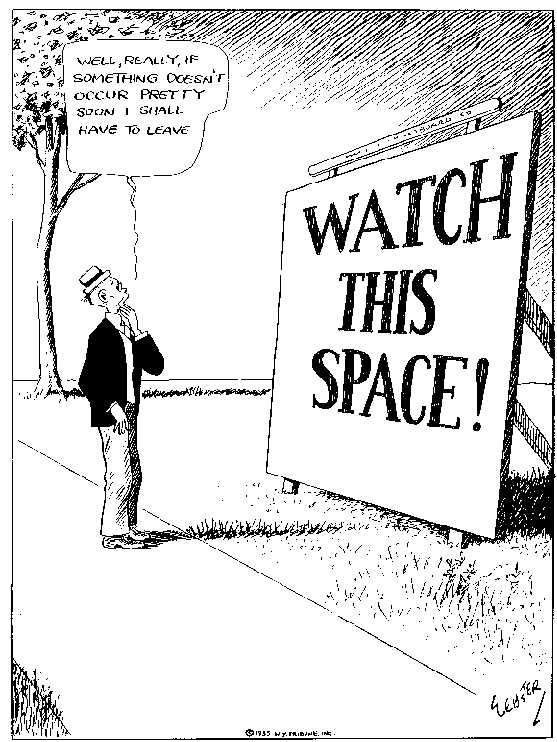
Webster himself described Milquetoast as, “the man who speaks softly and gets hit with a big stick.” Although at times he clearly understood that not speaking at all was the best way to avoid the big stick:
The Timid Soul

As Time’s writer noted, “In all Webster’s years of preoccupation with the psychology of timidity he seldom points up, even gently, the littleness, meanness and guile which timidity so often develops, and almost never touches on the propensity for bullying.” Perhaps this is one of the reasons Webster’s work has been so largely forgotten: at heart, Webster was too kind towards his subjects. As he so often showed in “The Timid Soul,” life has a way of bulldozing over the gentle and kind.
But that’s also why it’s refreshing to page through The Best of H. T. Webster Philo Calhoun, one of Webster’s close friends, who wrote the biographical sketch for the book, sums up his approach to his subject by quoting another writer’s description of the 18th century essayist and playwright, Joseph Addison: “His tone is never that of a clown or of a cynic. It is that of a gentleman, in whom the quickest sense of the ridiculous is constantly tempered by good nature ….”
